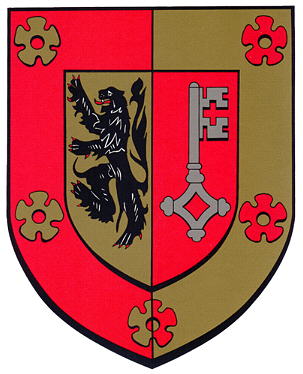Flaxweiler: Difference between revisions
Knorrepoes (talk | contribs) m (Text replace - "'''Origin/meaning :'''<br/>" to "====Origin/meaning====") |
Knorrepoes (talk | contribs) m (Text replace - "[[Literature" to "{{media}} [[Literature") |
||
| Line 19: | Line 19: | ||
The five flowers finally symbolise the five villages in the municipality. | The five flowers finally symbolise the five villages in the municipality. | ||
{{media}} | |||
[[Literature]] : Loutsch, J-C. et al.; Armorial communal du Grand-Duché de Luxembourg, Fisch, Luxembourg, 1989, 331 p. | [[Literature]] : Loutsch, J-C. et al.; Armorial communal du Grand-Duché de Luxembourg, Fisch, Luxembourg, 1989, 331 p. | ||
Revision as of 21:34, 8 July 2014
| Heraldry of the World Civic heraldry of Luxembourg |
FLAXWEILER
Origin/meaning
The arms were granted on October 18, 1985.
The arms are composed of elements from the arms of the historical owners of the municipality. The lion is derived from the arms of the Soleuvre family, who used a black lion on a silver field.
The key is derived from the arms of the provosts of Grevenmacher, who used the arms of Luxembourg with an additional key.
The main colours, gold and red, are derived from the arms of the Meysembourg family.
The five flowers finally symbolise the five villages in the municipality.
Contact and Support
Partners:
Your logo here ?
Contact us
© since 1995, Heraldry of the World, Ralf Hartemink 
Index of the site
Literature : Loutsch, J-C. et al.; Armorial communal du Grand-Duché de Luxembourg, Fisch, Luxembourg, 1989, 331 p.











